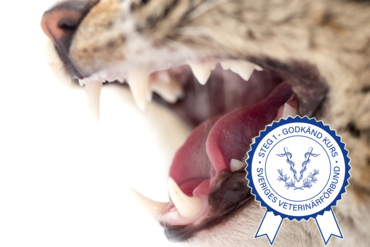Content
Theory:
• Anatomy and physiology of the feline oral cavity
• Oral examination and recording of findings
• Radiography and drawing up a treatment plan
• Feline periodontal disease
• Resorptive lesions
• Chronic gingivostomatitis
• Feline juvenile gingivitis/periodontitis/hyperplastic gingivitis
• Coronal amputation and extraction technique
• Extraktor technique
• Trauma: fractures, Temporomandibular joint injuries, soft tissue injuries
• Common malocclusions in the cat
• Complications after extractions
• Case discussions/interactive sessions
Practical:
• Oral examination and recording of findings
• Full mouth radiographs and drawing up a treatment plan
• Perform required periodontal therapy
• Crown amputation
• Full mouth extraction
• Caudal malocclusions – odonoplasty and alveolar augmentation
• Symphyseal separation
• Complications after extractions: Oronasal fistulas, flap failures, fractures
• Traumatic palational cleft
• MMF – dynamic MMF, labial buttons
• Anatomy and physiology of the feline oral cavity
• Oral examination and recording of findings
• Radiography and drawing up a treatment plan
• Feline periodontal disease
• Resorptive lesions
• Chronic gingivostomatitis
• Feline juvenile gingivitis/periodontitis/hyperplastic gingivitis
• Coronal amputation and extraction technique
• Extraktor technique
• Trauma: fractures, Temporomandibular joint injuries, soft tissue injuries
• Common malocclusions in the cat
• Complications after extractions
• Case discussions/interactive sessions
Practical:
• Oral examination and recording of findings
• Full mouth radiographs and drawing up a treatment plan
• Perform required periodontal therapy
• Crown amputation
• Full mouth extraction
• Caudal malocclusions – odonoplasty and alveolar augmentation
• Symphyseal separation
• Complications after extractions: Oronasal fistulas, flap failures, fractures
• Traumatic palational cleft
• MMF – dynamic MMF, labial buttons
Course goal
To be able to confidently diagnose and treat the most common oral problems in cats – both medical and surgical.
Audience
Veterinarians
Previous knowledge
Dentistry I and Dentistry II (or comparable education/experience).

Course fee
€ 3 200,00
Interest inquiry
At the moment there are no vacancies at the course. Please make an expression of interest.
Expression of interest